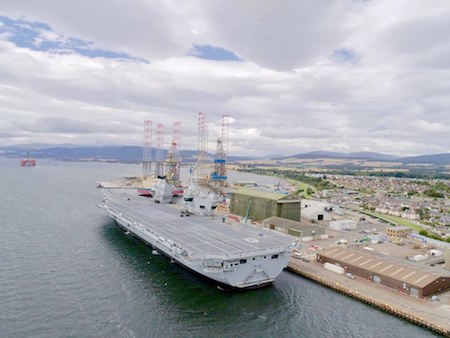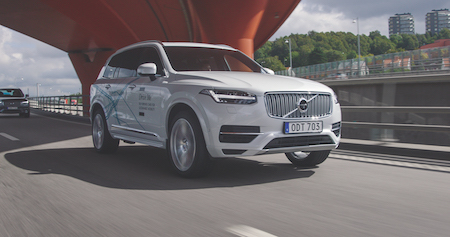Accompanying its arrival into Portsmouth harbour were a flotilla of craft, while above there were flybys from a variety of aircraft, including Royal Navy helicopters and Hawk jets. These aircraft were sanctioned and exempted from the airspace restriction that was put in place by the National Air Traffic Service (NATS), under Article 239 of the Air Navigation Order 2016.
The full details of the restriction order stipulate that no aircraft were permitted to fly below an altitude of 2,500 feet above sea level in the restricted zones, with the term “aircraft” refers to all flying machines as defined by the Air Navigation Order 2016, including any small balloon, any kite weighing not more than two kg, any small unmanned aircraft and any parachute including a parascending parachute.
This restriction, not unexpected for such a large and important vessel docking and accompanied by its own aircraft, comes in the wake of someone managing to land a small drone on its deck earlier in its journey. When the ship was docked in Invergordon, Scotland, on its way south to the Solent and conducting sea trials, a member of the online photograph sharing Facebook group, Black Isle Images, took their DJI Phantom drone out for some pictures.
As well as capturing still images and video of the aircraft carrier, the UAV was forced to land on the deck when it detected strong wind conditions. The drone is equipped with anti-crash sensors, and attempts to automatically land if it senses that it is in danger. He managed to fly the drone back off the ship safely, but later reported himself to the armed police guards, aware that he had broken the rules by flying so close. An investigation is under way, but so far he has escaped any immediate punishment or confiscation of the UAV.
Yesterday’s docking at Portsmouth went ahead with no reported drone incidents or other infringements of the restricted airspace.
References: sUAS News BBC Drone Safe Business Insider


.jpg)
.jpg)
.jpg)

.jpg)




